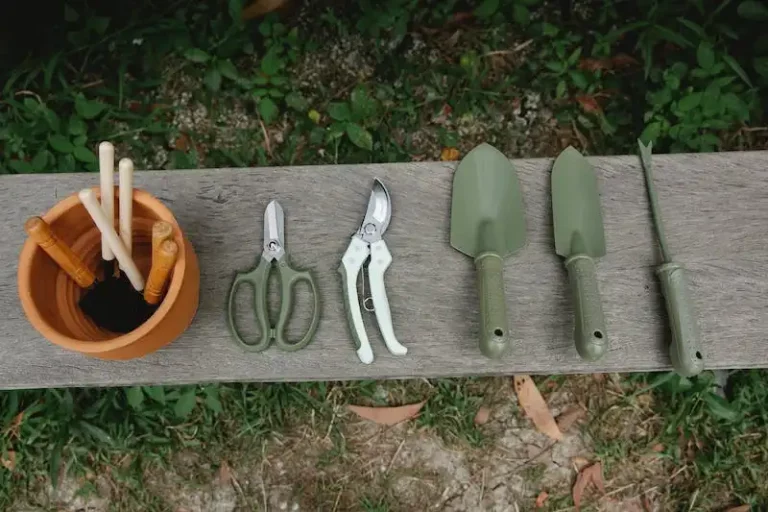When it comes to planting a vegetable garden, there are a few key things to keep in mind. First, consider what crops your family enjoys the most. Some popular options include onions, kale, and squash. You can also try growing annuals like sunflowers, which not only add beauty to your garden but also provide food for birds and bees.
Before you start planting, it’s important to prepare the soil. Aim for fertile and well-drained soils, as this will help your plants grow and thrive. To do this, you can add compost or potting soil to your garden beds or containers.
Another factor to consider is the climate in your area. Depending on where you live, you may need to adjust your planting schedule. For example, if you live in a colder climate, you may need to wait until mid-May to start planting your seedlings or transplanting plants outdoors.
Once you have everything planned out, it’s time to get to work. Start by clearing the area where you want to plant, whether it’s in rows or raised beds. If you’re short on space, you can also use containers, which are easier to maintain and keep tidy.
When planting your seedlings, make sure to check the spacing recommendations on the seed packet. In general, aim for about 12-18 inches of space between plants. This allows for proper airflow and helps prevent the buildup of diseases.
As your plants start to grow, it’s important to keep up with maintenance. This includes watering, weeding, and keeping an eye out for pests. Be sure to give your plants enough sun exposure, as most vegetables need at least 6-8 hours of direct sunlight per day.
One of the best parts of planting a vegetable garden is being able to enjoy the fruits of your labor. Fresh, locally grown food tastes better and is likely to be more nutritious than store-bought produce. Plus, growing your own vegetables can save you money in the long run.
So, whether you’re an experienced gardener or just starting out, planting a vegetable garden is a rewarding and fulfilling activity. It allows you to connect with nature, get some exercise, and provide healthy food for yourself and your family. Just remember to do your research, plan ahead, and have fun!
Starting A Garden At Home or Work
If you have a yard or even just a small balcony, starting a garden can be a great way to enjoy the benefits of fresh vegetables and relieve stress. Whether you are a seasoned gardener or a complete beginner, here are some tips to help you get started:
- Plan your garden: Before you start planting, it’s important to plan the layout of your garden. Consider the size of your space and the selection of veggies you want to grow. It’s also practical to consider the spacing between plants to ensure they have enough room to reach their full potential.
- Choose your materials: Depending on the setup of your garden, you may need to buy or collect materials for creating your beds. Raised beds are a popular choice as they can improve drainage and save your back from unnecessary bending. You can use creative materials like old rugs or wooden pallets to make your garden beds.
- Prepare the soil: Good soil preparation is vital for successful gardening. Turn over the soil in your beds and remove any weeds or rocks. Adding compost and organic matter can help improve nutrient content and water retention. If you have a large garden, consider using a worm farm to create compost and help with soil buildup.
- Start planting: Once your beds are ready, it’s time to start planting. Whether you choose to start from seeds or buy young plants from a nursery, make sure to read the instructions on the seed packets or plant labels. Some vegetables, like corn, need a long growing season, while others, like lettuce, can be planted in multiple crops throughout the season.
- Watering and maintenance: Proper watering is essential for the health of your plants. Water deeply and thoroughly, especially during dry spells. Mulching can help to conserve moisture and reduce weed growth. Regularly check for pests and diseases, and take appropriate measures to control them.
- Transplanting and frost protection: If you are starting your garden early in the spring, it’s important to be aware of the last frost date in your area. Some vegetables, like tomatoes and peppers, are sensitive to frost and should not be transplanted outside until after the danger has passed. Consider using row covers or caps to protect your plants from late frosts.
- Enjoy the harvest: As your plants grow, you can look forward to enjoying the fruits of your labor. Harvest your vegetables when they are at their peak of ripeness for the best flavor. Store-bought veggies can’t compare to the taste and freshness of homegrown ones. Plus, gardening is a great way to engage in physical activity and connect with nature.
Starting a garden can be a rewarding and practical activity. It not only provides a sustainable supply of fresh and nutritious food, but also helps to create a beautiful and aesthetically pleasing environment, whether at home or work. So grab your gardening tools and get started today!
Garden Setup Help and Support
When it comes to setting up your vegetable garden, there are a few key steps you need to take to ensure your garden is successful. From the preparation of the soil to the planting of your seedlings, each step plays a crucial role in the overall health and productivity of your garden.
One important factor to consider is the space you have available. Depending on the size of your garden, you may need to plan and space out your vegetables accordingly. Some vegetables, like cucumbers and climbing beans, require more space to grow, while others, like lettuces and leafy greens, can be planted closer together.
Another crucial step is the preparation of the soil. A healthy soil is essential for the well-being of your plants and the overall yield of your garden. Adding organic matter, such as compost or worm castings, can help improve the fertility of your soil and provide essential nutrients for your plants.
While preparing the soil, you can also consider using mulch to cover the surface. Mulch helps suppress weeds, retain moisture, and regulate soil temperature, all of which are beneficial for your garden. Additionally, mulch can prevent soil erosion and reduce water evaporation, especially during hot summer days.
Once you have prepared your garden and planted your seedlings, it’s important to provide them with the necessary support. This can be done through various methods such as placing stakes or using trellises for climbing plants. Proper support helps plants grow vertically, saves space, and prevents fruits from touching the ground, reducing the risk of rot or disease.
If you’re new to gardening or need some extra assistance, there is plenty of help and support available. Online resources and gardening communities offer a wealth of knowledge and tips that can guide you through the process. You can also consider consulting with local gardening experts who are familiar with the specific requirements of your region or zone.
Another option is to join a local gardening club or participate in workshops where you can learn from experienced gardeners. These interactions allow you to share experiences, ask questions, and learn better practices from others who have worked the soil for years.
Remember, gardening can be a fun and rewarding activity. Not only do you get to enjoy the fruits of your labor, but you also have the satisfaction of knowing that you are providing fresh and healthy food for yourself and your family. So, don’t be afraid to get your hands dirty and give gardening a try!
How to create a new garden bed and prepare the soil
Starting a new garden bed is an exciting and rewarding project. Whether you’re a beginner or experienced in gardening, creating a new garden bed allows you to grow a variety of vegetables and enjoy fresh produce all season long. Here are some tips on how to create a new garden bed and prepare the soil:
Choose the right location: Find an area in your outdoor space that receives at least 6-8 hours of sunlight daily. Most vegetable plants require full sun to thrive, so make sure to pick a sunny spot.
Prepare the soil: Before planting your garden bed, it’s important to prepare the soil properly. Start by removing any existing grass, weeds, or vegetation from the area. Loosen the soil using a garden fork or tiller to a depth of 8-12 inches.
Improve soil fertility: To ensure good fertility for your plants, add organic matter to the soil. Incorporate compost, well-rotted manure, or other organic materials into the soil. This will enhance drainage, increase water-holding capacity, and provide essential nutrients for healthy plant growth.
Consider raised beds: If you have poor soil quality or limited space, consider creating raised beds. Raised beds provide better drainage, warmer soil temperatures, and can be filled with high-quality planting mix to give your plants a good start.
Choose the right vegetable varieties: When selecting vegetable varieties for your garden, consider your climate zone and the time of year. Choose varieties that are suitable for your region and that have a shorter maturity period, especially if you have a short growing season.
Start seeds indoors: To get a head start on the growing season, start seeds indoors in pots or seed trays. This allows you to have transplants ready for planting when the weather is suitable. Vegetables like tomatoes, peppers, and eggplants benefit from indoor seed starting.
Consider using mulch: Mulch is a practical way to conserve moisture and control weeds in your garden bed. Consider using organic mulching materials like straw, wood chips, or shredded leaves. Mulch also helps to regulate soil temperature and keeps the soil surface from crusting.
Provide support for climbing crops: If you’re growing climbing vegetables like beans, peas, or cucumbers, provide support for them. Install trellises, cages, or stakes to give these plants a structure to climb on.
Water regularly: Proper watering is essential for the success of your garden bed. Water the plants deeply and evenly, especially during hot summer months. Avoid overwatering, as it can lead to disease and root problems. Use drip irrigation or a watering can to deliver water directly to the roots of your plants.
Start planting: Once you’ve prepared the soil and made the necessary arrangements, you can start planting your vegetable garden. Plant your crops according to their recommended spacing and depth. Consider interplanting compatible crops to maximize space utilization.
Harvest and enjoy: With proper care and regular maintenance, your vegetable garden will flourish. As the vegetables mature, start harvesting them when they are ripe. Enjoy the taste of fresh, homegrown veggies straight from your garden. If you have an abundance of produce, try canning or freezing them for later use.
Remember to rotate crops: To maintain soil fertility and minimize pest and disease problems, practice crop rotation. Do not plant the same vegetable or vegetable family in the same location for consecutive years. Instead, move your plantings in a round-robin fashion throughout your garden beds.
By following these steps, you can create a new garden bed and prepare the soil for successful vegetable plantings. Gardening is a rewarding hobby that not only saves you money but also allows you to enjoy nutritious and flavorful produce throughout the growing season.

